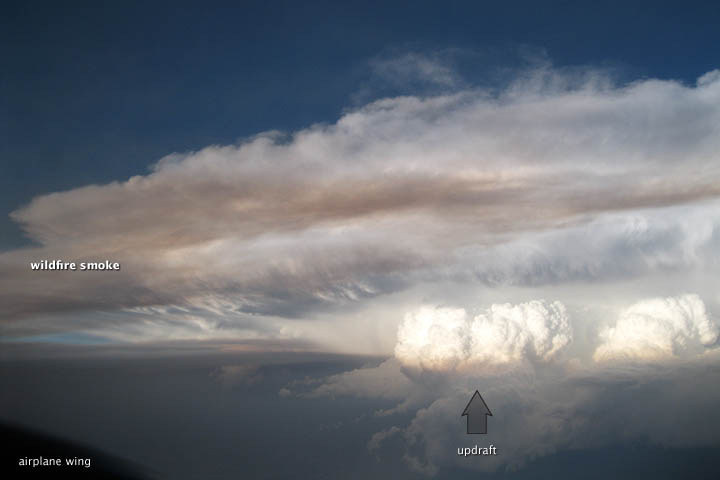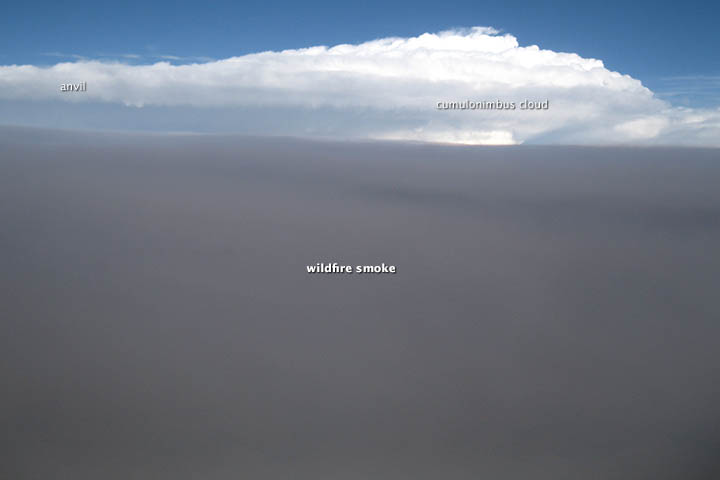Dramatic Photos Show Wildfire Smoke Sucked Up by Storm


NASA scientists on a recent research flight got an eyeful when their plane encountered a massive supercell thunderstorm gobbling up smoke from wildfires ?a phenomenon rarely glimpsed up close, and one that scientists are eager to study.
On June 22, one of the researchers aboard a DC-8 aircraft snapped images of curtains of thick, gray smoke being lofted high into the atmosphere and sucked up through soaring, anvil-shaped clouds that are the signature of large thunderstorms.
The plumes of smoke were coming from Colorado's High Park Fire, a massive blaze that burned 87,284 acres and destroyed more than 250 homes before it was contained completely.
As the convection at the heart of the storm sucked up the smoke and tossed it high into the air, the pilot of the research plane moved in for a closer look. The aircraft flew beneath the storm at an altitude of about 9,000 feet (2,743 meters), then ascended directly through the storm's core to its anvil at about 35,000 feet (10,668 m).
Throughout the dramatic ride, instruments aboard the plane measured high levels of carbon monoxide and formaldehyde, byproducts of wildfires.
The flight was part of the Deep Convective Clouds and Chemistry (DC3) field campaign based in Kansas. The campaign involved numerous flights to Alabama, Colorado and Oklahoma for data to help researchers understand how storms transport material into the upper troposphere — the layer of the atmosphere where most weather occurs.
The wildfire smoke and the thunderstorm it encountered provided a much-sought window into this process.
Get the world’s most fascinating discoveries delivered straight to your inbox.
Some 100 researchers from 29 organizations participated in the field campaign, which wrapped up June 30, and researchers now face the long work of poring through the data.
This story was provided by OurAmazingPlanet, a sister site to LiveScience. Follow OurAmazingPlanet for the latest in Earth science and exploration news on Twitter @OAPlanet and on Facebook




